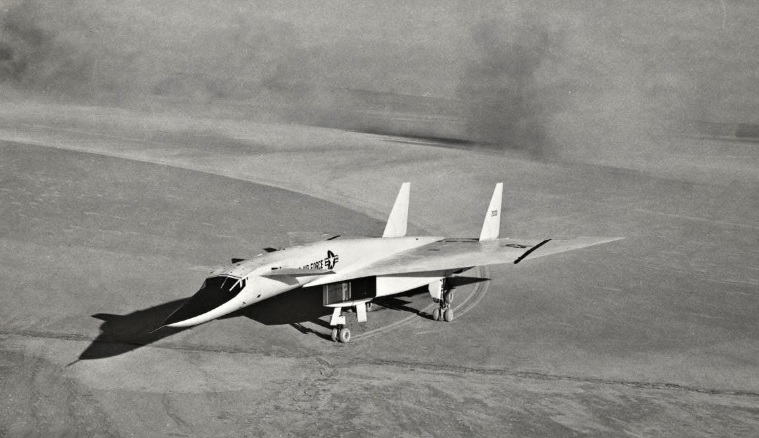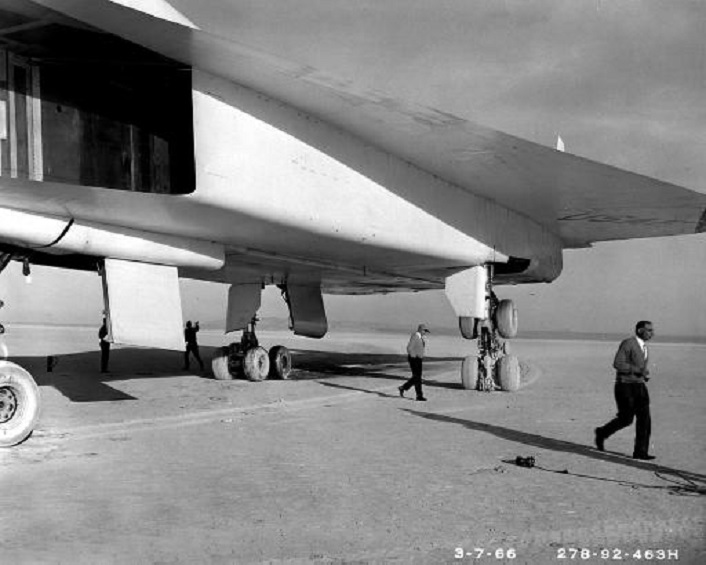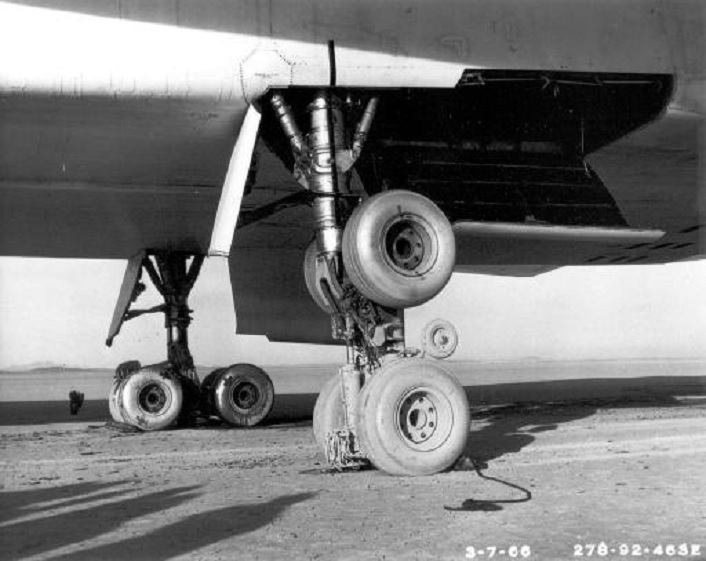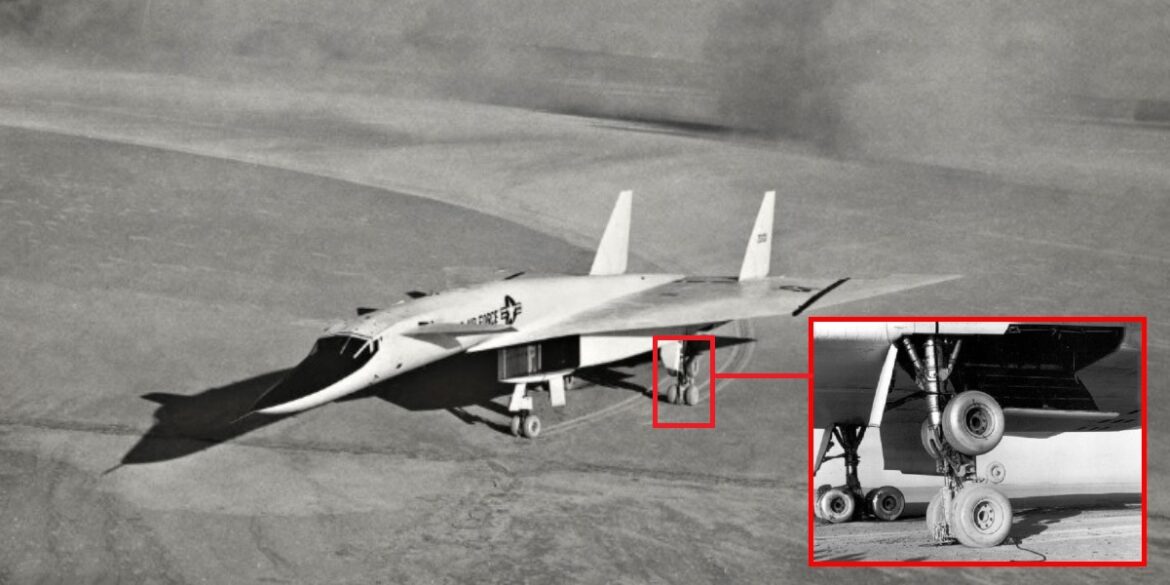There was trouble with both sets of main gear on the XB-70A Valkyrie. On the left side, the gear had not fully lowered. The right-side gear was in worse shape as it hadn’t lowered at all before rotating
The B-70 Valkyrie was intended to be the ultimate high-altitude, high-speed manned strategic bomber, with a planned cruise speed of Mach 3 and an operating height of 70,000 feet. But as things turned out, it would have a quite different role in aviation history.
Even though the B-70 was an amazing technological achievement, it was being developed when the future of the manned bomber was unclear. Many people thought manned aircraft were obsolete and missiles were the way of the future in the late 1950s and early 1960s. The Kennedy Administration opted to cancel its plans to use the B-70 as a result.
Two experimental XB-70A prototypes were under construction at North American Aviation when the program was canceled. The first XB-70A (Air Vehicle 1 or AV 1) flew in September 1964, and it achieved Mach 3 flight in October 1965. The second Valkyrie (AV 2) first flew in July 1965, but in June 1966, it was destroyed following an accidental mid-air collision. It had made its maiden flight in July 1965. There was never a third Valkyrie (AV 3).

The original XB-70A aircraft was transferred to the U.S. Air Force National Museum in 1969, although it continued to fly and produce useful test data for the research program.
According to Graham M. Simons’ description in Valkyrie: The North American XB-70- The USA’s Ill-Fated Supersonic Heavy Bomber, on March 7, 1966, AV 1’s 37th flight demonstrated the kind of hardship that two seasoned test pilots could endure. Van Shepard was the pilot, and Joe Cotton was the copilot. Halfway through the planned flight, both hydraulic systems began to fail.
Shepard quickly brought the Valkyrie home as Cotton extended the landing gear. No green indicators came on, and that was soon followed by a call from the chase aircraft that there was trouble with both sets of main gear. On the left side, the gear had not fully lowered before rotating to meet the direction of travel, leaving the rear wheels higher, rather than lower, than the front set of wheels.
The right side gear was in worse shape as it hadn’t lowered at all before rotating. Even more concerning was the fact that, although being close, it hadn’t fully rotated in the direction of travel. The issue wasn’t resolved by either the emergency or backup system. The pilots must have spent hours in the cockpit before engineers on the ground called up their plan. Shepard would land the Valkyrie on the dry lake bed at Edwards Air Force Base (AFB), so there would be plenty of room.

The engineers thought that the left gear would level out on touchdown because the XB-70A’s weight would force the gear into its proper position. Though the right gear was likely to be much lower than the left, the landing should at least force the gear to finish swinging in the direction of travel and allow the wingtip to clear the ground. The right gear was behind the main strut’s centerline, so it was unlikely to level out.
When Van Shepard positioned AV 1 on the lake bed, all of the main gears performed as the engineers had intended. The aircraft was down and rolling, but it wanted to turn sharply to the right, threatening to ground-loop, which, although probably not fatal to the pilots, would probably destroy the aircraft. Shepard continued to provide power to the No. 6 engine in order to maintain the XB-70A in a nearly straight line.
After rolling almost three miles across the lake bed, the XB-70A came to a stop, having swung over half a mile to the right and turned 110 degrees. The sole factor enabling this landing was the size of the lake bed. As soon as the damage was assessed and fixed, AV 1 was able to get back to flight on March 22.

Photo by U.S. Air Force

